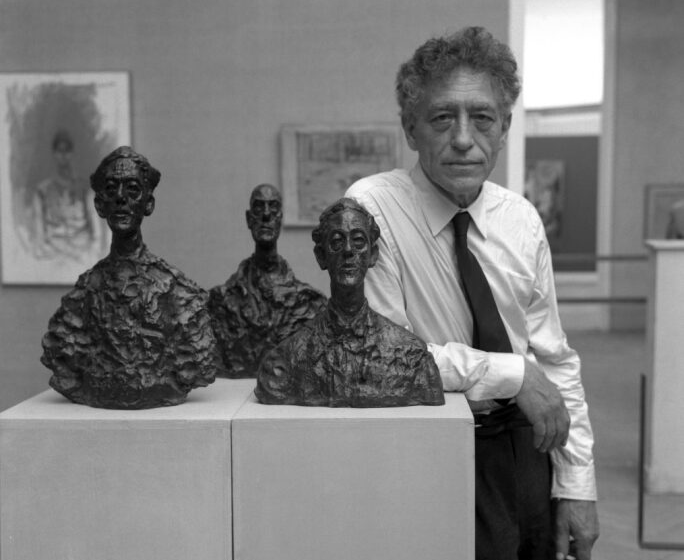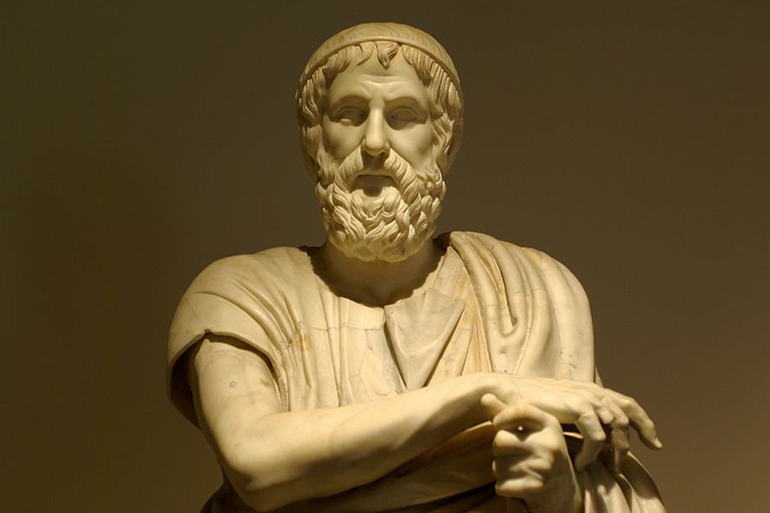Alberto Giacometti Quotes

Artistic Influences
Influence of Cubism
Cubism had a profound impact on modern art, and its influence can be seen in various aspects of artistic expression. The Cubist movement, pioneered by Pablo Picasso and Georges Braque, revolutionized the way artists represented reality, fragmenting objects into geometric forms and multiple viewpoints.
One of the key characteristics of Cubism is its rejection of traditional techniques of perspective and representation. Artists who followed in the footsteps of Picasso and Braque abandoned the idea of creating a single, cohesive image that captures reality from a single viewpoint.
Instead, they sought to break down objects into their constituent parts, analyzing and reassembling them into multiple viewpoints and fragmented forms. This approach allowed for a more nuanced and complex exploration of space and time in art.
The influence of Cubism can be seen in the work of numerous artists, including Alberto Giacometti, who drew inspiration from this movement’s emphasis on abstraction and fragmentation.
Giacometti’s sculptures often featured elongated forms and fragmented bodies, which can be seen as a nod to the Cubist ideal of breaking down objects into their constituent parts. His use of bold, expressive lines and simplified forms also reflects the influence of Cubism.
The abstracted, simplified forms that Giacometti employed in his work served to convey the essence and spirit of the human form rather than a realistic representation. This approach is reminiscent of the Cubist focus on capturing the underlying structure of an object rather than its surface appearance.
In addition to their formal innovations, both Cubism and Giacometti’s art often explored the realm of the human experience and emotion. Cubist artists sought to express complex emotions and ideas through their fragmented forms, while Giacometti’s work often conveyed a sense of isolation and melancholy.
The influence of Cubism on modern art cannot be overstated. Its emphasis on abstraction, fragmentation, and multiple viewpoints paved the way for a wide range of artistic movements, from Expressionism to Surrealism. The impact of Cubism can also be seen in various aspects of culture beyond art, including literature, music, and dance.
The legacy of Cubism continues to inspire artists today, pushing them to experiment with new forms, techniques, and modes of expression. By embracing the fragmented, abstracted forms that Cubism made possible, contemporary artists are able to explore fresh perspectives on reality, challenging our perceptions and expanding our understanding of the world.
The work of Alberto Giacometti was heavily influenced by Cubism, a movement that emerged in the early 20th century. Giacometti’s elongated and distorted forms were inspired by the geometric shapes and fragmented images of Cubist artists such as Pablo Picasso and Georges Braque.
Giacometti’s artistic influences were diverse and far-reaching, encompassing various movements and styles that shaped his unique vision.
While Cubism had a profound impact on his work, as evident in the elongated and distorted forms of his sculptures, Giacometti was also deeply influenced by Surrealism.
The dreamlike quality and emphasis on the subconscious in Surrealist art resonated with Giacometti’s own fascination with the human form and its complexities.
Moreover, Giacometti was inspired by the works of African and Oceanic artists, whose use of abstract forms and ritualistic symbols had a profound impact on his creative vision.
The artist’s fascination with the unknown and the mysterious is also reflected in his interest in ancient cultures, such as Egyptology and Archeology.
Giacometti’s travels to Africa, India, and other parts of Asia further broadened his artistic horizons, introducing him to diverse cultures and artistic traditions that shaped his work.
Furthermore, Giacometti was also influenced by the Abstract Expressionist movement, particularly the works of artists like Jackson Pollock and Mark Rothko.
Their emphasis on gestural brushstrokes, vibrant colors, and emotive expressions resonated with Giacometti’s own experiments with materiality and texture in his sculptures.
Creative Process
Experimentation and Innovation
The creative process is a mysterious and often unpredictable journey that can be both exhilarating and terrifying.
For artists, writers, and innovators, it’s a path that requires patience, persistence, and a willingness to take risks.
In the words of the celebrated artist Alberto Giacometti, “The essence of art is creation,” which implies a never-ending quest for innovation and experimentation.
As we delve into the realm of creativity, it becomes clear that the process is not linear, but rather a complex web of intuition, inspiration, and iteration.
Experimentation
Experimentation is at the heart of the creative process, allowing artists to push boundaries, test limits, and explore new frontiers.
Giacometti’s own work, characterized by elongated figures and abstracted forms, exemplifies the importance of experimentation in shaping artistic vision.
Tips for Encouraging Experimentation
- Set aside time for unstructured exploration: Allow yourself to wander without a specific goal or outcome in mind.
- Embrace failure as a learning opportunity: View mistakes and setbacks as chances to grow and refine your skills.
- Pursue diverse interests and inspiration: Expose yourself to various art forms, cultures, and perspectives to stimulate your imagination.
Innovation
Innovation is the spark that ignites the creative process, propelling artists and innovators forward into uncharted territories.
Giacometti’s innovative use of materials, techniques, and forms helped to redefine the boundaries of modern art.
Strategies for Fostering Innovation
- Challenge assumptions: Question conventional wisdom and explore alternative perspectives.
- Collaborate with others: Engage in cross-disciplinary exchanges to stimulate fresh ideas and approaches.
- Emerge from your comfort zone: Take calculated risks to venture into the unknown and discover new possibilities.
The Importance of Embracing Risk
Embracing risk is essential for creative growth, allowing artists to explore uncharted territories and push the boundaries of innovation.
Giacometti’s own words serve as a reminder that “the only way to make art is by creating it.”
Celebrating Experimentation and Innovation
- Recognize and celebrate the value of experimentation in driving artistic innovation.
- Emphasize the importance of taking calculated risks to explore new ideas and approaches.
- Provide a supportive environment that encourages experimentation, learning from failure, and iteration.
The Power of Creative Freedom
Creative freedom is the lifeblood of artistic expression, empowering artists to pursue their passions without restriction or constraint.
Giacometti’s unwavering dedication to his art, despite criticism and uncertainty, serves as a testament to the power of creative freedom.
Preserving Creative Freedom
- Nurture your unique perspective: Protect and cultivate your artistic vision.
- Avoid external pressures: Resist conformity to trends or expectations.
- Persevere through challenges: Maintain your commitment to creative expression despite obstacles or setbacks.
The pursuit of creative freedom is a lifelong journey, one that requires dedication, persistence, and a willingness to take risks.
Giacometti’s legacy serves as a beacon for artists and innovators everywhere, reminding us that the power of creativity lies in its ability to transform, inspire, and innovate.
Giacometti was a prolific artist who experimented with various techniques throughout his career. He was known to work tirelessly in his studio, often creating multiple versions of the same piece. This process allowed him to push the boundaries of traditional sculpture and create innovative works that challenged the viewer’s perceptions.
The creative process, as embodied by Alberto Giacometti, was a deeply personal and intuitive one, guided by a relentless pursuit of innovation and experimentation.
For this pioneering artist, the act of creation was not just about producing art, but about exploring the very essence of human existence and the mysteries of the universe.
Giacometti’s Approach to Art
- Giacometti’s artistic process was characterized by a sense of freedom and spontaneity, as he sought to tap into his subconscious mind and allow his instincts to guide him.
- He was known to work tirelessly in his studio, often creating multiple versions of the same piece as he experimented with various techniques and forms.
- This process of iterative refinement allowed Giacometti to push the boundaries of traditional sculpture and create innovative works that challenged the viewer’s perceptions.
The Power of Repetition in Giacometti’s Work
Giacometti was fascinated by the concept of repetition and its role in the creative process. He often returned to the same theme or subject matter, refining and reinterpreting it through each new version.
- This repetitive process allowed Giacometti to explore different aspects of his subject, revealing new depths and meanings with each iteration.
- Through repetition, Giacometti also sought to capture the essence of human experience, distilling it down to its most fundamental and universal forms.
The Value of Imperfection in Giacometti’s Art
Giacometti was not interested in creating perfect or polished works of art. Rather, he sought to capture the imperfections and nuances of human existence, often leaving his pieces rough and unfinished.
- This emphasis on imperfection gave Giacometti’s work a sense of authenticity and honesty, as if the artist was sharing his true and unvarnished thoughts with the viewer.
- The imperfections in Giacometti’s art also added a layer of complexity and depth, inviting the viewer to engage with the piece on a deeper level.
Legacy
Critical Acclaim and Sales
Legacy refers to the lasting impact or influence that an individual’s work has on future generations. In the case of artists, their legacy often extends beyond the boundaries of time and continues to be felt through the appreciation and admiration of their art by people around the world.
The term “legacy” is often associated with concepts such as tradition, heritage, and cultural significance. Artists who are remembered for generations to come have managed to capture a piece of history in their work, leaving behind an enduring mark that continues to inspire and influence others.
Critical acclaim is another aspect that plays a significant role in determining an artist’s legacy. When critics and art historians evaluate an artist’s body of work, they are assessing its artistic merit, innovation, and contribution to the development of art history. Artists who receive critical acclaim have demonstrated exceptional skill, creativity, and vision, earning them recognition within the art world.
Artists like Alberto Giacometti, for instance, were celebrated during their lifetime for their unique style and technique. Their innovative approach to sculpture, characterized by elongated figures and abstracted forms, has inspired generations of artists and art enthusiasts alike. The fact that Giacometti’s work continues to be exhibited in museums and galleries worldwide is a testament to its enduring power and impact.
Moreover, sales figures can provide another measure of an artist’s legacy. When artworks by renowned artists are sold at auction for high prices, it not only reflects their monetary value but also underscores the enduring popularity and demand for their work. The fact that art collectors, institutions, and individuals are willing to pay premium prices for these pieces indicates a deep appreciation for the artistic and cultural significance they convey.
In the case of Alberto Giacometti’s work, his sculptures have consistently fetched high prices at auction over the years. For example, in 2015, his bronze sculpture “Chien” sold for $141 million at Sotheby’s New York, setting a new record for the artist at the time. This sale demonstrates not only the monetary value of his work but also its enduring popularity and critical acclaim within the art world.
Overall, an artist’s legacy is determined by a combination of factors, including their impact on future generations, critical acclaim, and sales figures. Alberto Giacometti’s legacy is a testament to the enduring power of his art and his continued influence on contemporary art. His innovative approach to sculpture has inspired countless artists, and his work remains highly sought after by collectors and institutions alike.
As art historians continue to study and analyze Giacometti’s work, it is clear that his legacy extends far beyond his lifetime. His contributions to the development of modern and contemporary art are immeasurable, and his influence will be felt for generations to come.
The importance of understanding an artist’s legacy lies in its ability to provide context and insights into their creative process, artistic vision, and cultural significance. By examining the critical acclaim and sales figures associated with Giacometti’s work, we can gain a deeper appreciation for his artistic innovations and the enduring impact they have had on the art world.
As art enthusiasts continue to explore and appreciate Giacometti’s work, it is essential to acknowledge the significant role he played in shaping modern and contemporary art. His legacy serves as a reminder of the power of creativity and innovation in art, inspiring future generations to push boundaries and challenge conventions.
Giacometti’s unique style gained critical acclaim during his lifetime, with many of his pieces being sold at auction for recordbreaking prices. His work is now held in high esteem by museums and private collectors around the world, including the Museum of Modern Art (MoMA) in New York City and the Tate Modern in London.
The Legacy of Alberto Giacometti’s work extends far beyond his own lifetime, as his unique style and contributions to the world of art continue to be celebrated by audiences and institutions alike.
Giacometti’s distinct artistic voice was marked by a sense of elongation and abstraction, which he achieved through his signature technique of elongating human figures. This innovative approach not only set him apart from other artists but also garnered widespread acclaim during his lifetime.
Many of Giacometti’s pieces were sold at auction for record-breaking prices, solidifying his position as one of the most influential and successful artists of the 20th century.
The Museum of Modern Art (MoMA) in New York City, a renowned institution dedicated to modern and contemporary art, holds an impressive collection of Giacometti’s work, which serves as a testament to his enduring impact on the art world.
Similarly, the Tate Modern in London, a leading museum of international modern art, also has an extensive selection of Giacometti’s pieces on display. This widespread recognition underscores the significance and broad appeal of Giacometti’s work across different cultures and geographical locations.
The fact that his pieces are held in such high esteem by museums and private collectors worldwide is a clear indication of the timeless value and relevance of his art. As an artist who was not only celebrated during his lifetime but also continues to influence contemporary artistic movements, Giacometti’s legacy remains strong and continues to inspire new generations of artists and art enthusiasts.
- Acute Quotes - October 17, 2024
- Ad Quotes - October 17, 2024
- Adam Quotes - October 17, 2024



